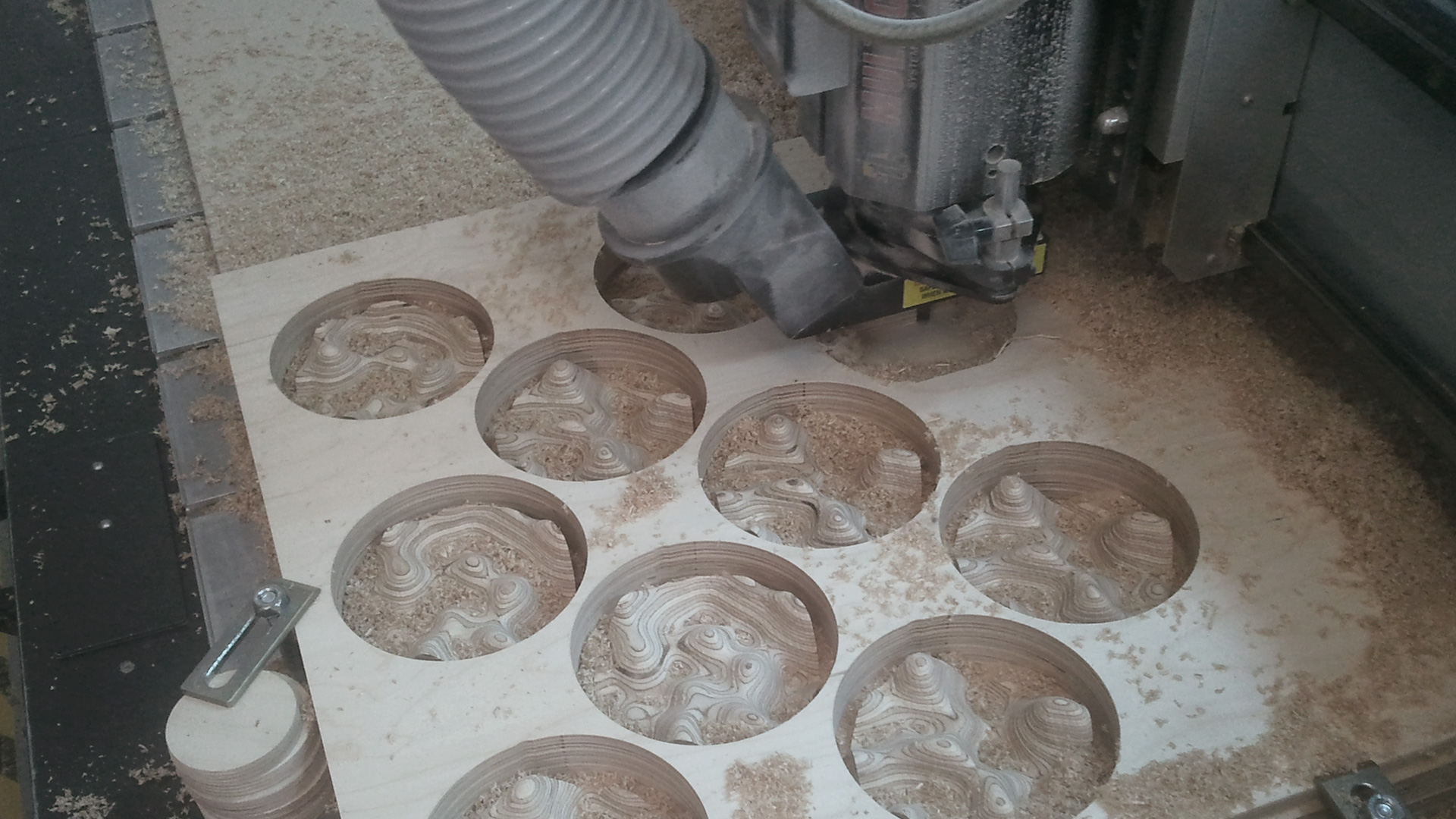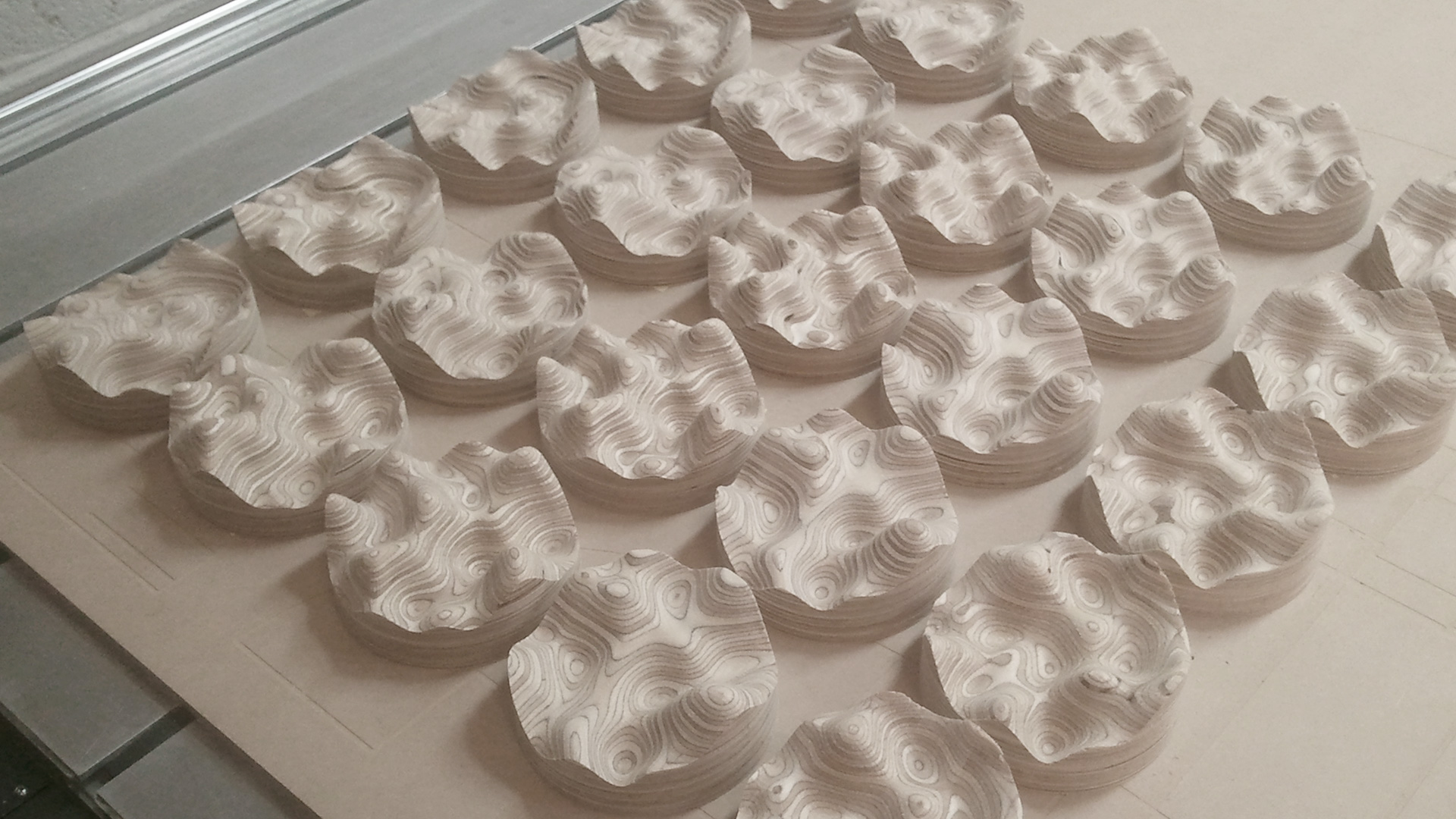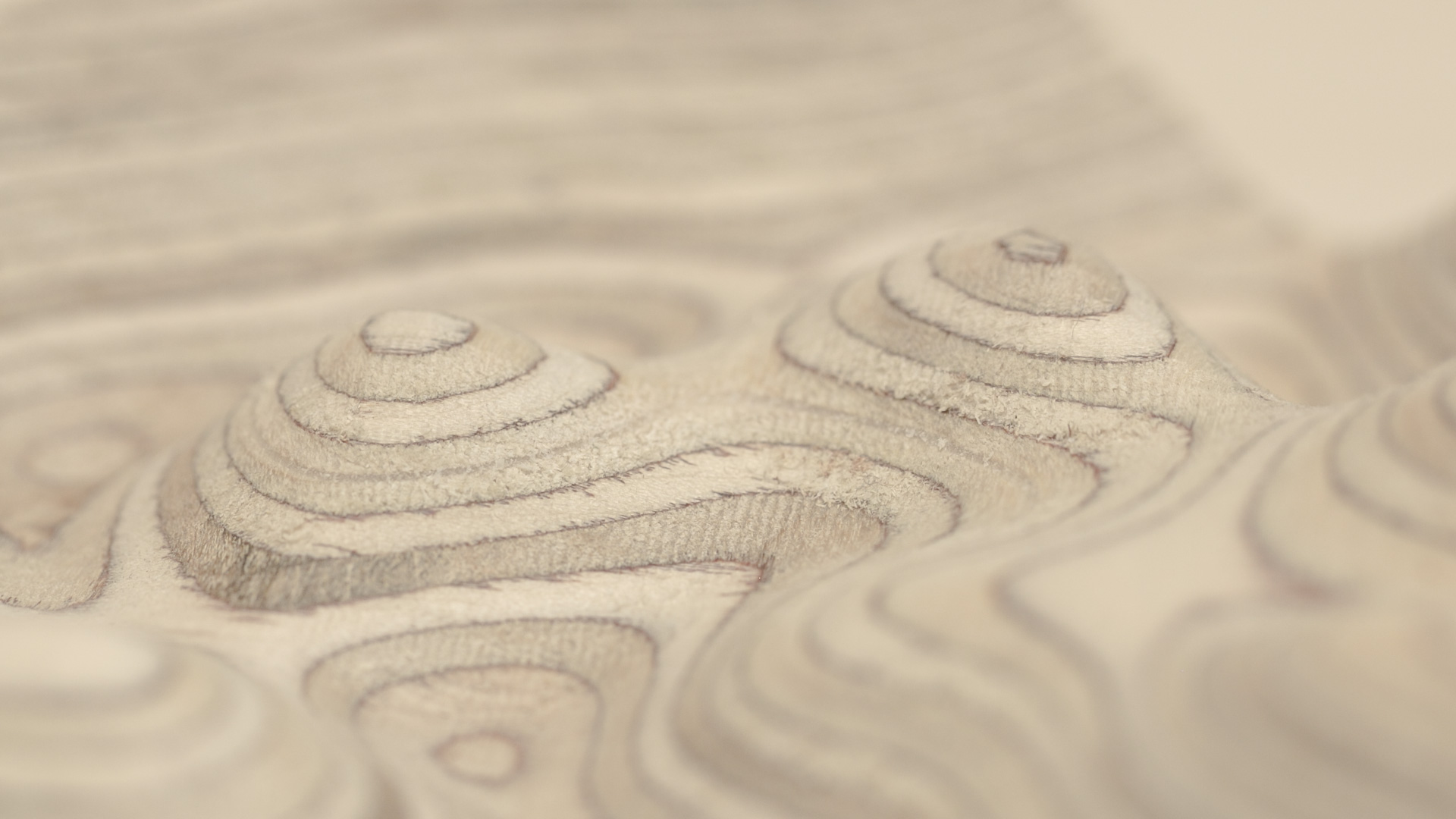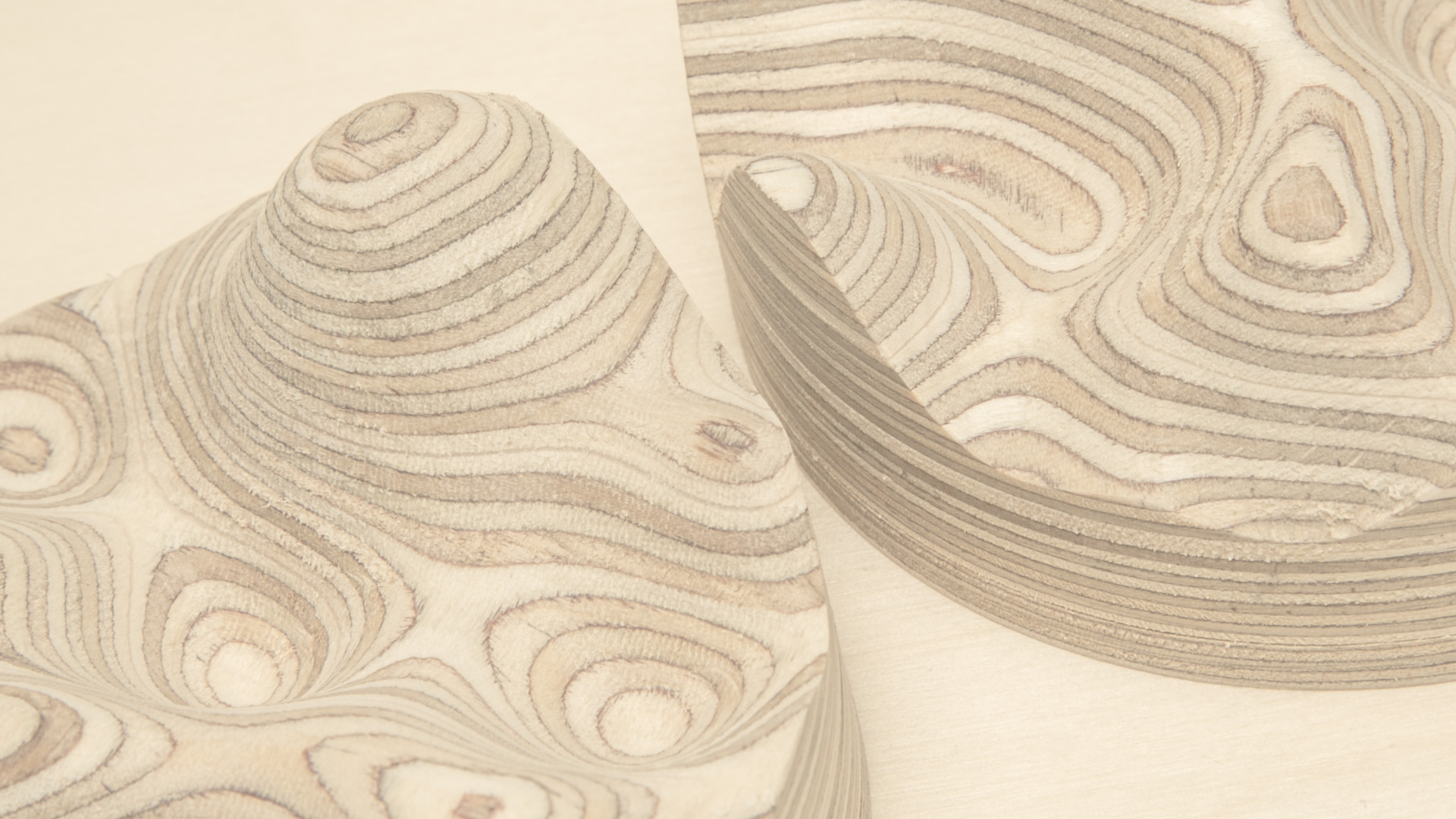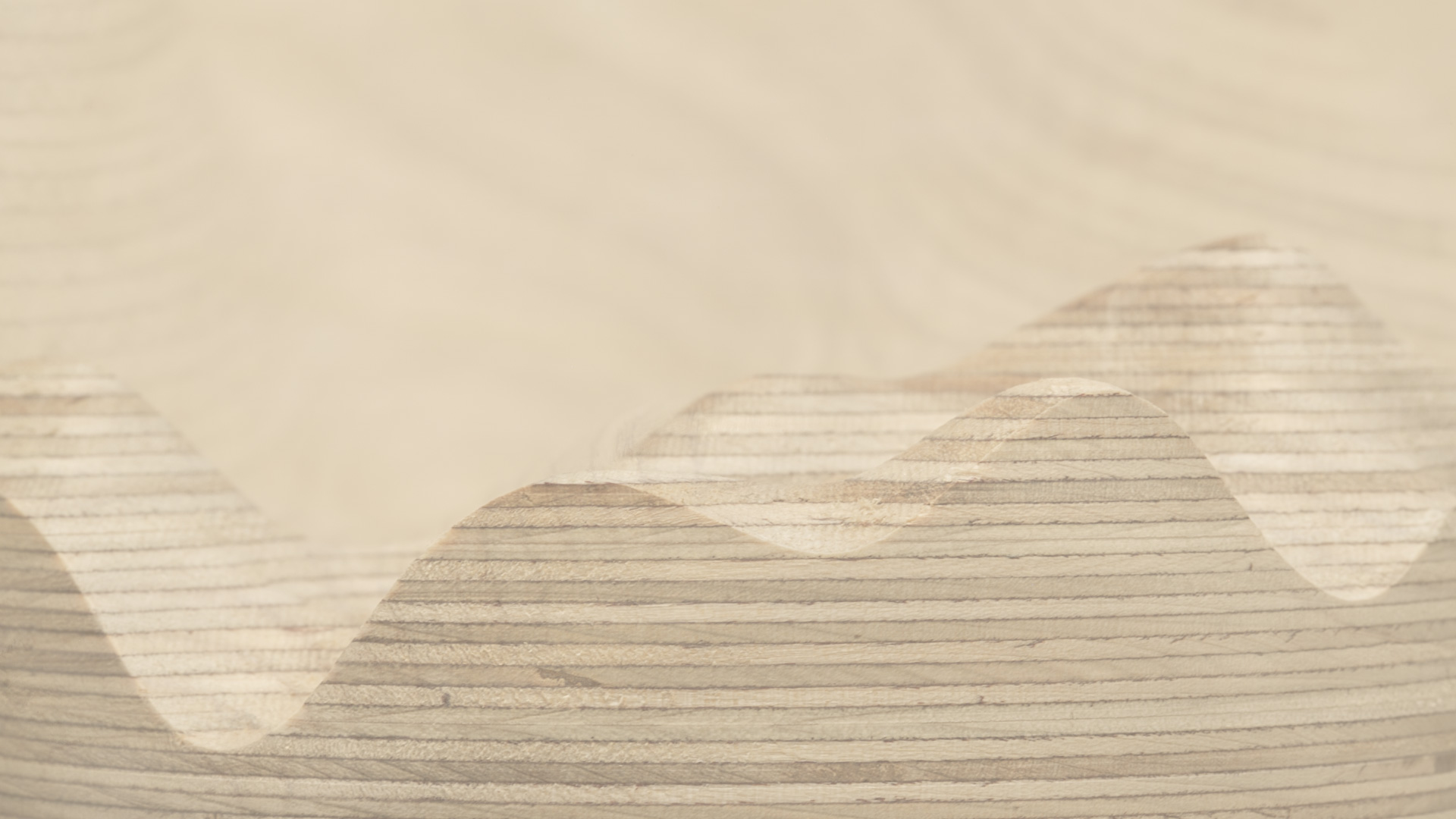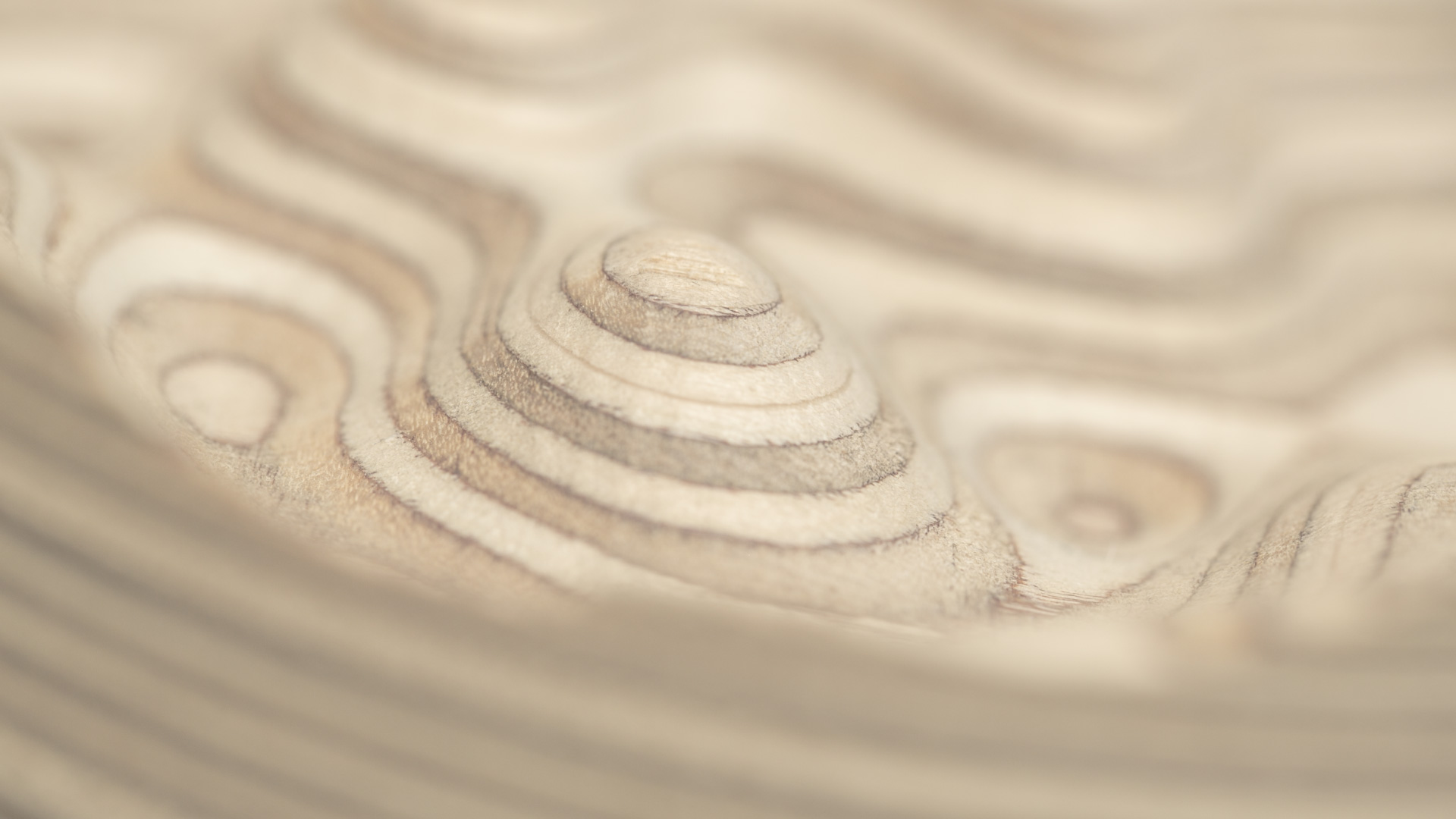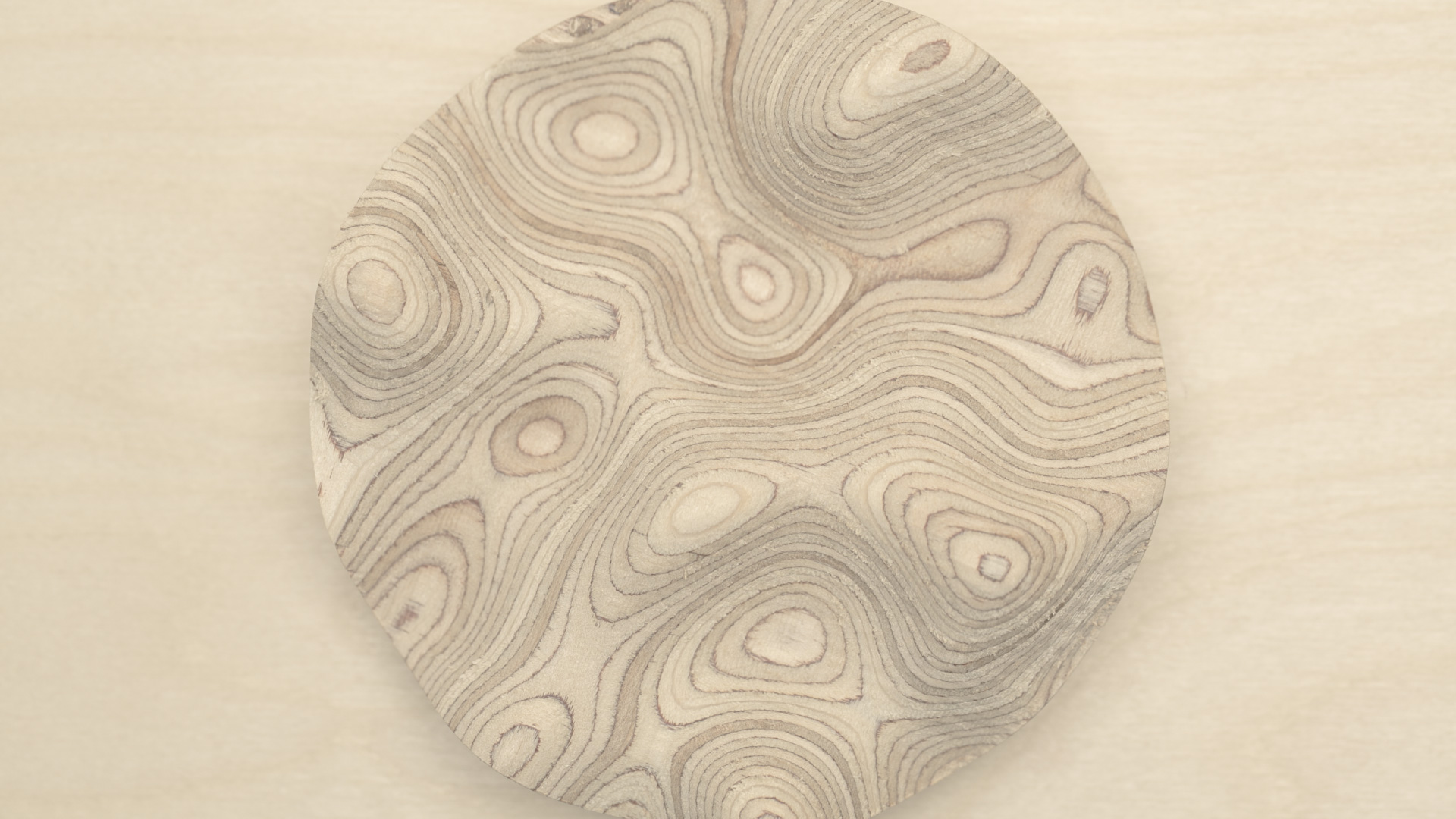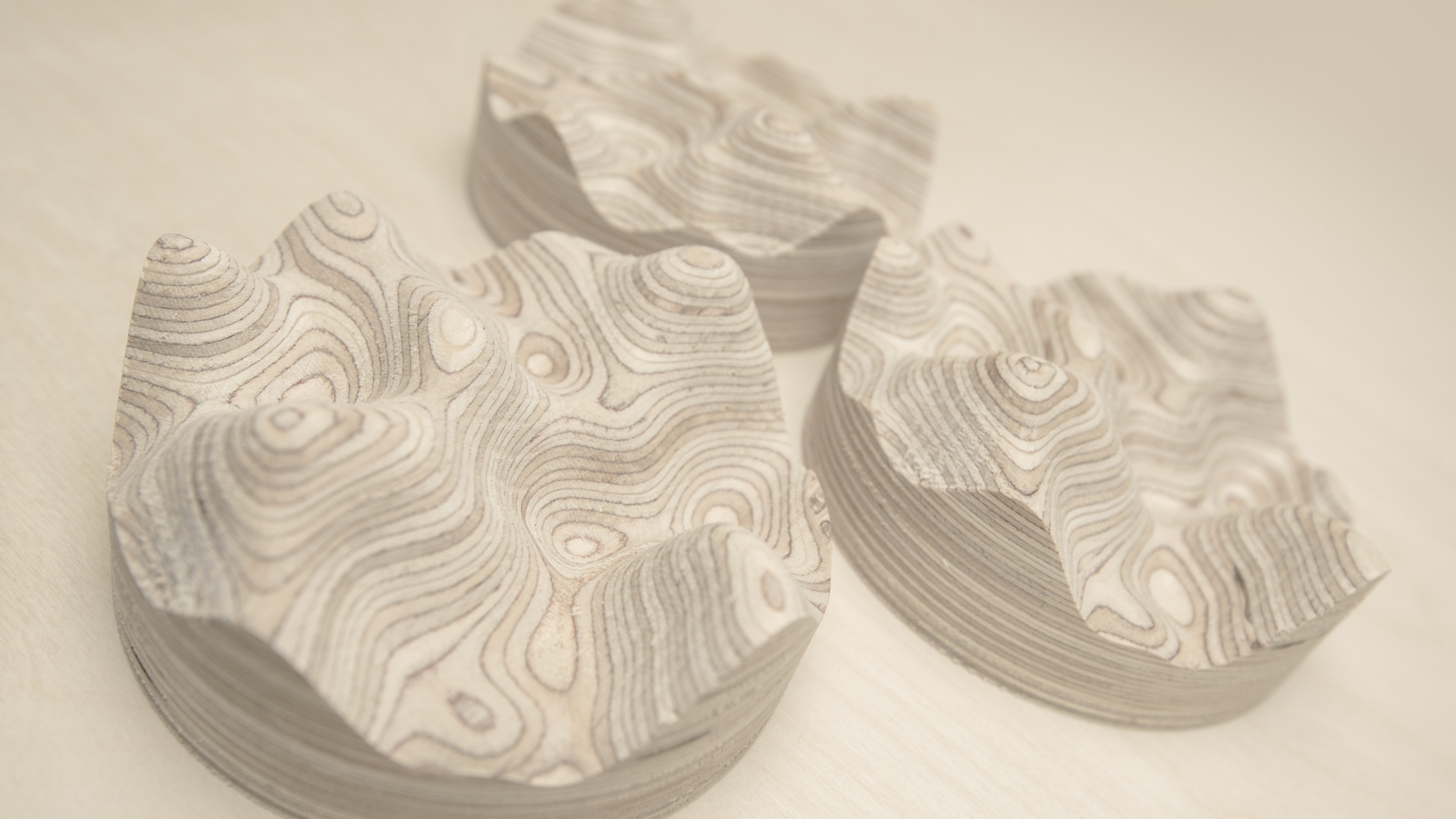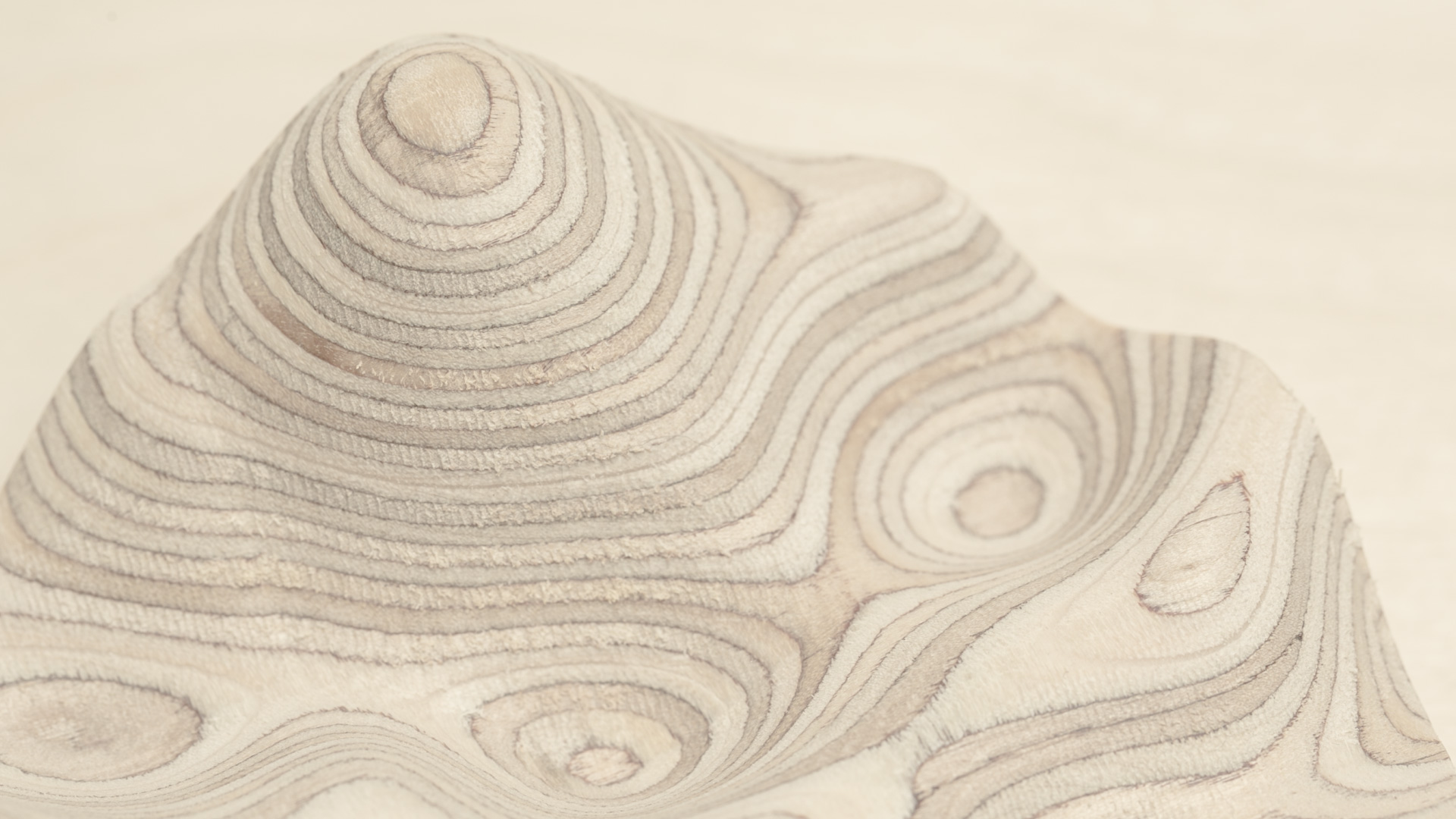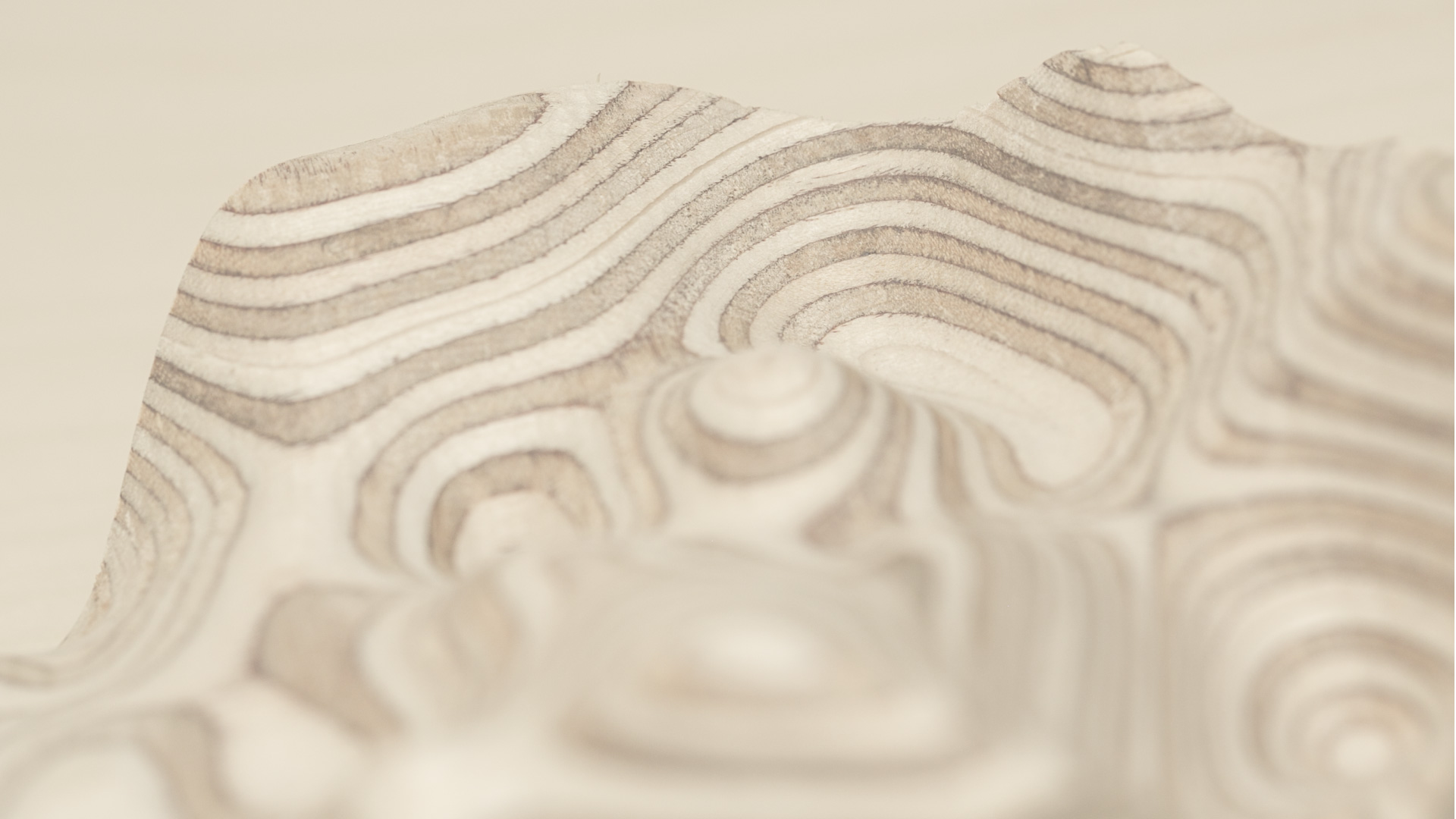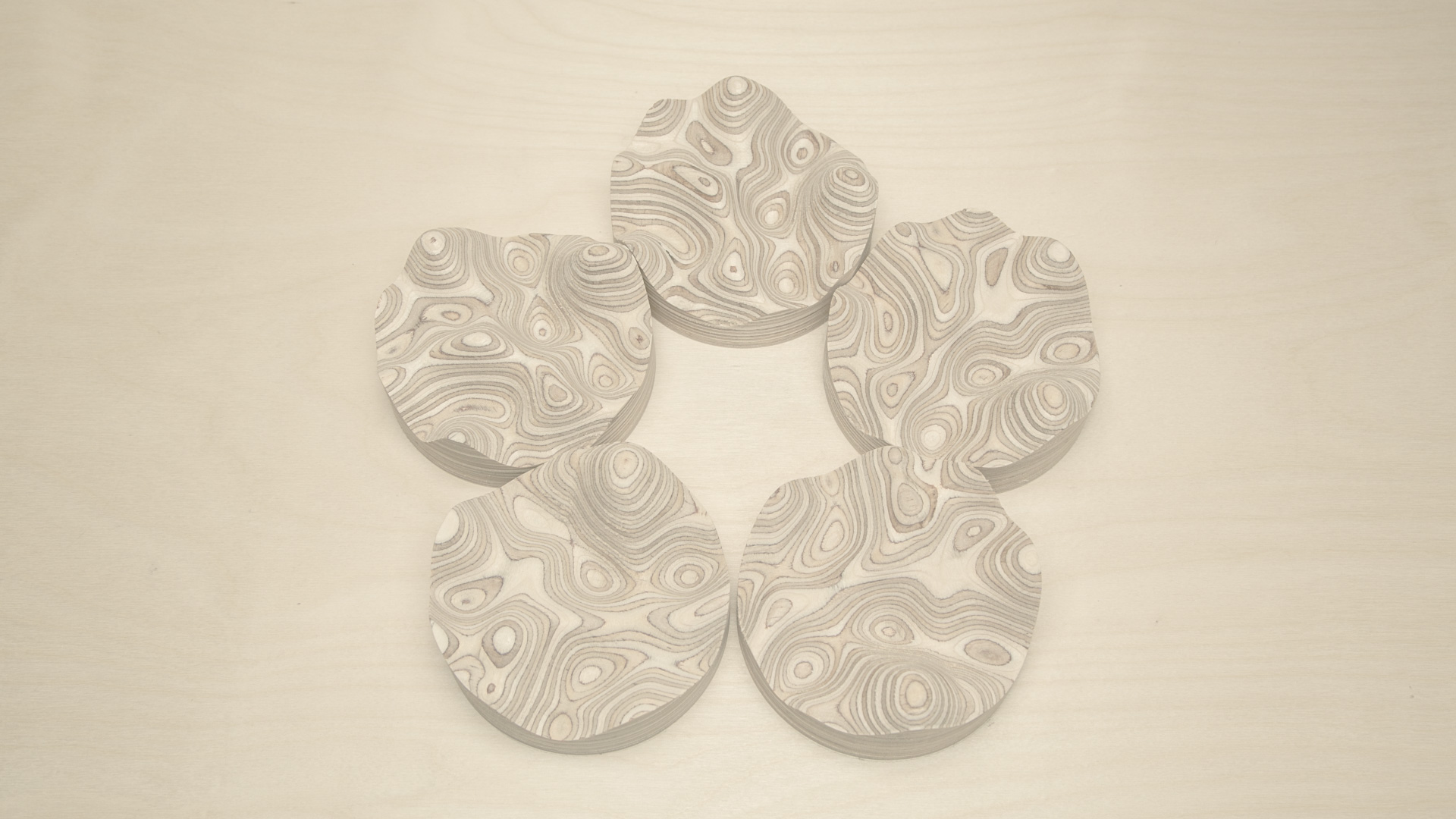STOPCYCLE (web edition)
Director : Benjamin Ducroz
Sound : Benjamin Ducroz
Year : 2014
Duration : 1"42"
Stopcycle is a series of 25 small scale wooden sculptures, which as an ensemble create a seamless 25 frame animated loop. The work explores changes of form, and sound using repetition through time. The sculptures shapes are organic and layered in form, much like topographical maps. The forms are descriptions of anatomical regions, as well as being formal experiments in geometry and motion. Their shapes are infinitely cycling, beginning anew once they end - they can be interpreted as tangible, shapeshifting clocks.
The 25 frame loop is based on a procedural texture named ‘perlin noise’. Perlin noise is a computer generated visual effect developed by ken perlin in the 1980’s. It is a gradient noise used by visual effects artists to increase the appearance of realism in computer graphics. It is a fractal landscape exhibiting some form of statistical self-similarity to natural phenomena.
Stopcycle employs these techniques and presents them physically utilising the mediums of sculpture and stop frame animation.
ORGANUM CYCLES
1-18 October - 2014
Blindside Gallery
Melbourne
The work of Benjamin Ducroz and Michael Prior is united through a shared fascination with cycles, polyrhythms and the structure of film. This exhibition combines two new works Stopcycle and Free Organum, the third of a series of works exhibited in Melbourne in 2014.
The universe is a delicate balance of virtually infinite forces interacting with each other in a constant state of transference, movement and flux. It has been a wealth of inspiration for writers, thinkers and scientists; grand machinations of cause and effect.
William Blake serenaded the moon as it rose from the horizon at the start of each night in his poem Evening Star, Shakespeare often spoke of or to the heavens through his characters or sonnets, and Emily Bronte pled with huge consolidated masses of hot gasses hundreds of trillions of kilometres away. These great minds admired the effects and oblivious control that light, space, gravity and time had over our comparatively dramatic lives, but not all control is sentient. We simply happen to have come in to existence amidst the push and pull of light, gravity, space and time. We bend at their very existence and can do very little to influence these forces.
Scientifically, light moves at 299, 792, 458 metres a second in a vacuum. That’s 7.5 times around the earth per second. Light itself is a curious beast. It is not made out of atoms, but of photons which behave as both particles and waves, both fluid and beamlike. Sound, travelling through the air in our atmosphere which is nitrogen, argon, carbon dioxide, methane, water and (only 21%) oxygen, moves at a comparably paltry speed of only 331.3 to 346 metres a second, depending on the temperature and interference factors. Gravitation is the phenomenon in which all objects of mass attract each other. Space is three dimensions in which we exist and are bound; we cannot not inhabit space or exist outside of it. Time is the fourth dimension in which all human experience occurs chronologically.
The earth, whilst large, is much more finite than anyone one of these forces. Like us, the earth is made up of minerals and matter, though a great deal more, and the effects of these forces acting against the earth are much more easily noticeable than if we were trying to imagine them individually the void. The earth acts as a stage: apples fall and the moon orbits at the will of gravity; mountains rise up and crumble with the infinitesimal additions and subtraction of dust and dirt happening every moment during the course of deep-time yet only perceivable in the strata’s and layers of rock revealed during archaeological digs, and even as you read this, light is reflected directly at your face at less than a millionth of a second.
Michael Prior’s Free Organum and Benjamin Ducroz’s Stopcycle explore the nature of these forces, more as science experiments than poetry, or contemplative inquisitions unburdened by a need for answers.
Free Organum is the third in a series following on from Florid Organum exhibited at West Space and Elastic Organum at Heide Museum of Modern Art. The Organum series consists of individual stations of arranged objects, and electric engines set at differing speeds set simple structures in motions: asymmetrical, elliptical loops of wire, piercing lasers interrupted by surfaces of varying heights, and water droplets encouraged, one by one, around a predestined track. Utilising simple objects and plain materials such as tubing, cardboard, metal cylinders and magnets, the invisible forces that govern physics orchestrate a repetitious performance that emulates the grand dance of massive planetary bodies in our solar system that is constantly happening all around us.
Ducroz’s Stopcycle stop-animation depicts the changing face of the earth on a scale of both time and space that humans aren’t privy too. In moments, Ducroz shows the viewer the undulating rise and fall of topography, a moment of film easily equal to more than a thousand lifetimes, using layers of wood to represent the hypnotic, malleable, rippling landscape during deep-time at a vastly increased speed. The relief model landscape of timber is composed in circular medallions, each appearing on film to rotate, the infinite cycle expressed in the physicality of the object but also in its use. The proposal that solid matter is also fluid, given a large enough time span, antagonises our own limited experience and observation; Stopcycle introduces us to the expanded qualities of matter that we simply don’t witness due to physical limitations.
This organum of forces, is constantly at play, singing out in harmonic opposition with, and against one another, in balanced polyphony, jamming for no reason but the transference of energy.
Ace Wagstaff
